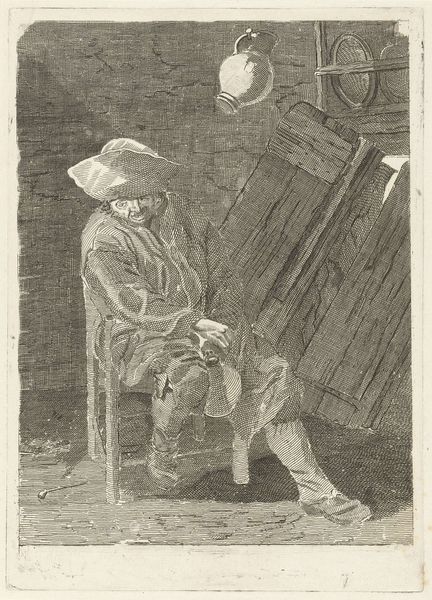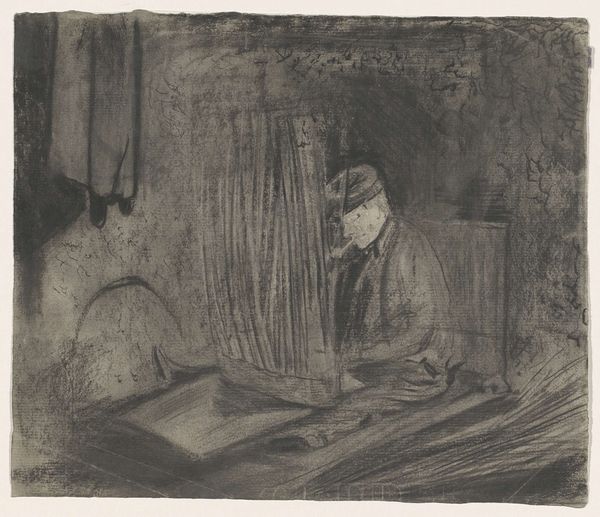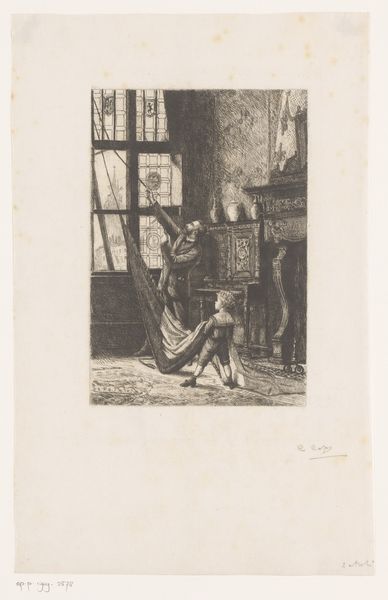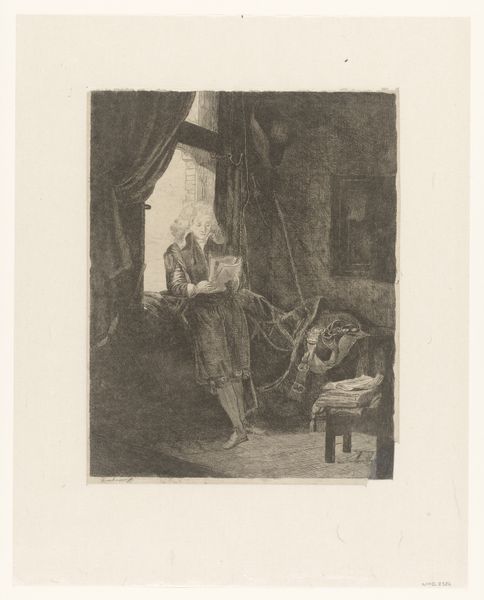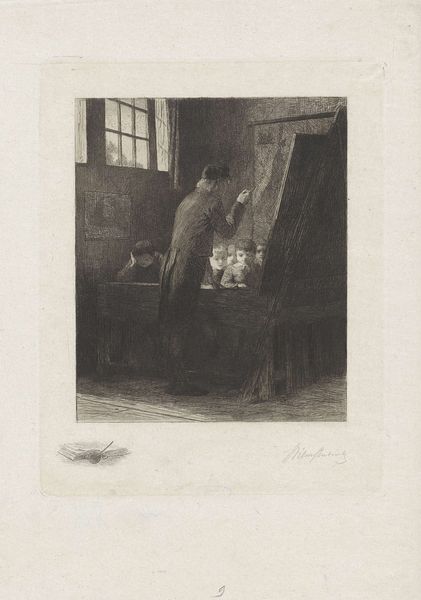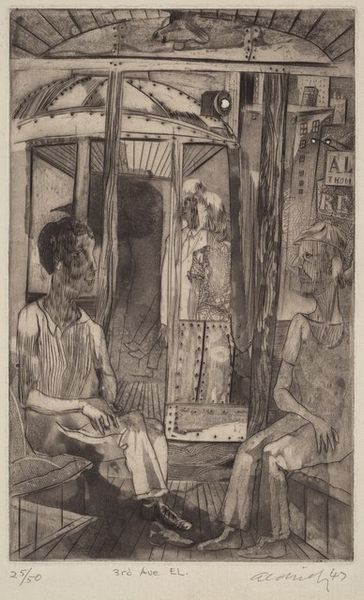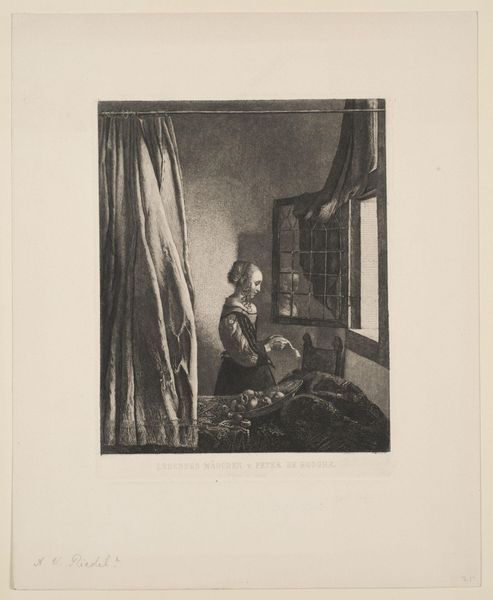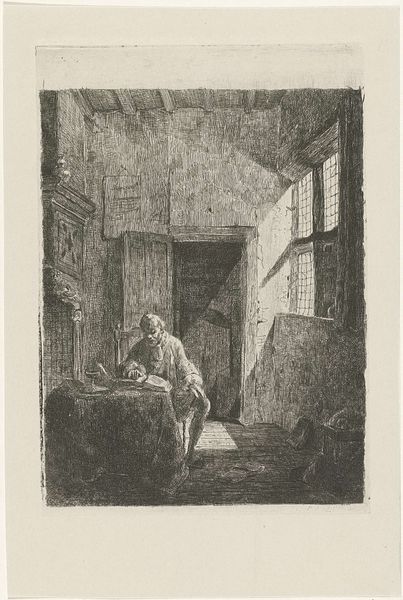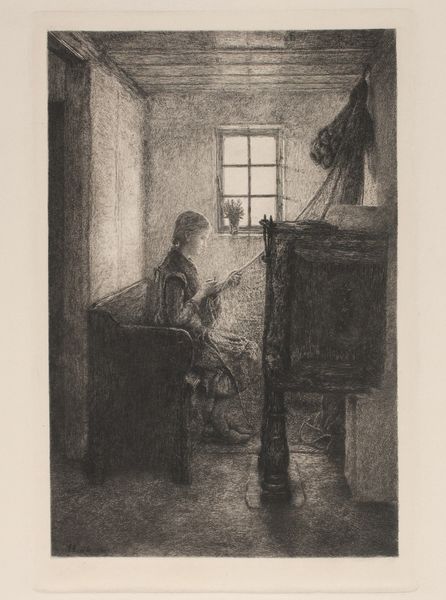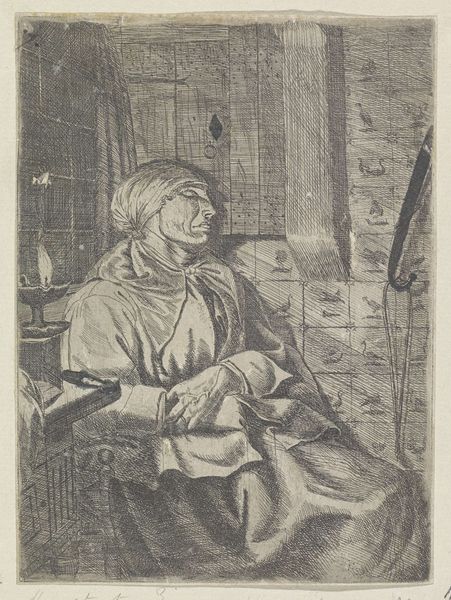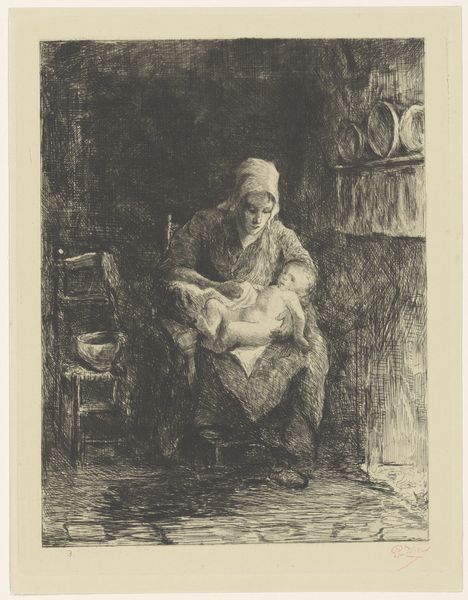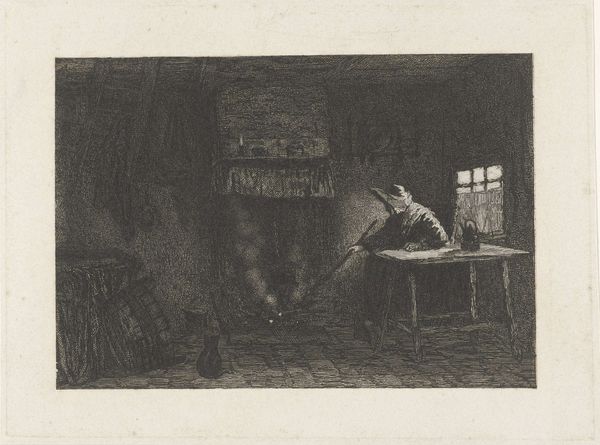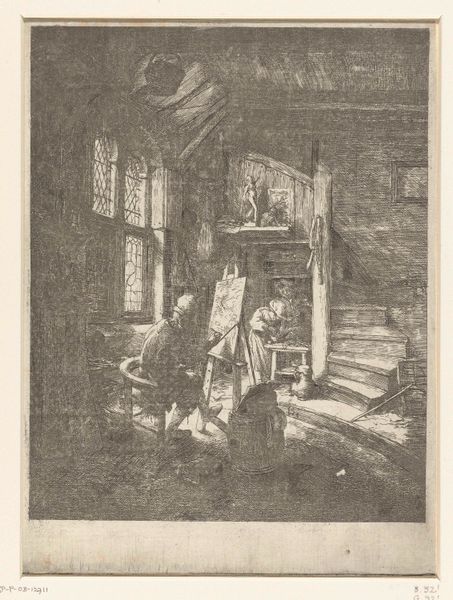
drawing, print, etching, intaglio
#
drawing
#
16_19th-century
# print
#
etching
#
intaglio
#
charcoal drawing
#
genre-painting
#
realism
Dimensions: plate: 21.5 x 13.2 cm (8 7/16 x 5 3/16 in.) sheet: 67.2 x 30.9 cm (26 7/16 x 12 3/16 in.)
Copyright: National Gallery of Art: CC0 1.0
Editor: Here we have François Bonvin's "The Weaver," created in 1861. It’s an etching, and there's a real intimacy to the scene, almost voyeuristic, capturing this woman absorbed in her work. How does this image fit into the context of 19th-century art and society? Curator: Bonvin positions the weaver in the setting of her labour, highlighting its connection to domestic spaces but also the world outside. The window offers a sense of connection beyond her immediate task, reflecting debates around women’s roles and industrialization. How might the availability of newly emerging technologies shape or impact this intimate labor portrayed in the work? Editor: That makes me think about how technology both freed up women's time, but also devalued their traditional crafts. The way the light comes in seems so important... Curator: Exactly. The window doesn't just illuminate; it acts as a liminal space between the private labor and the wider economy. Light can be interpreted as divine right to her craft. Bonvin may be prompting the viewer to consider how artistic representation itself participates in the public life and discourse around labour. Where does the composition lead your eye, and what feeling is that aiming for, do you think? Editor: I see… my eye definitely goes straight to the window, but is quickly pulled back to the figure. It makes me consider how we value different kinds of work. Curator: Yes, precisely. It makes me think of the debates concerning art’s engagement with social realities. Do you find that the domestic labor in Bonvin's era echoes any contemporary socio-economic themes? Editor: It's powerful to consider how seemingly simple images like this can reflect much larger cultural and political shifts. It gives you a much wider appreciation for art. Curator: It does indeed. Examining such artwork reminds us how images are tools to be examined and critically understood within the public realm of art, society, and thought.
Comments
No comments
Be the first to comment and join the conversation on the ultimate creative platform.
